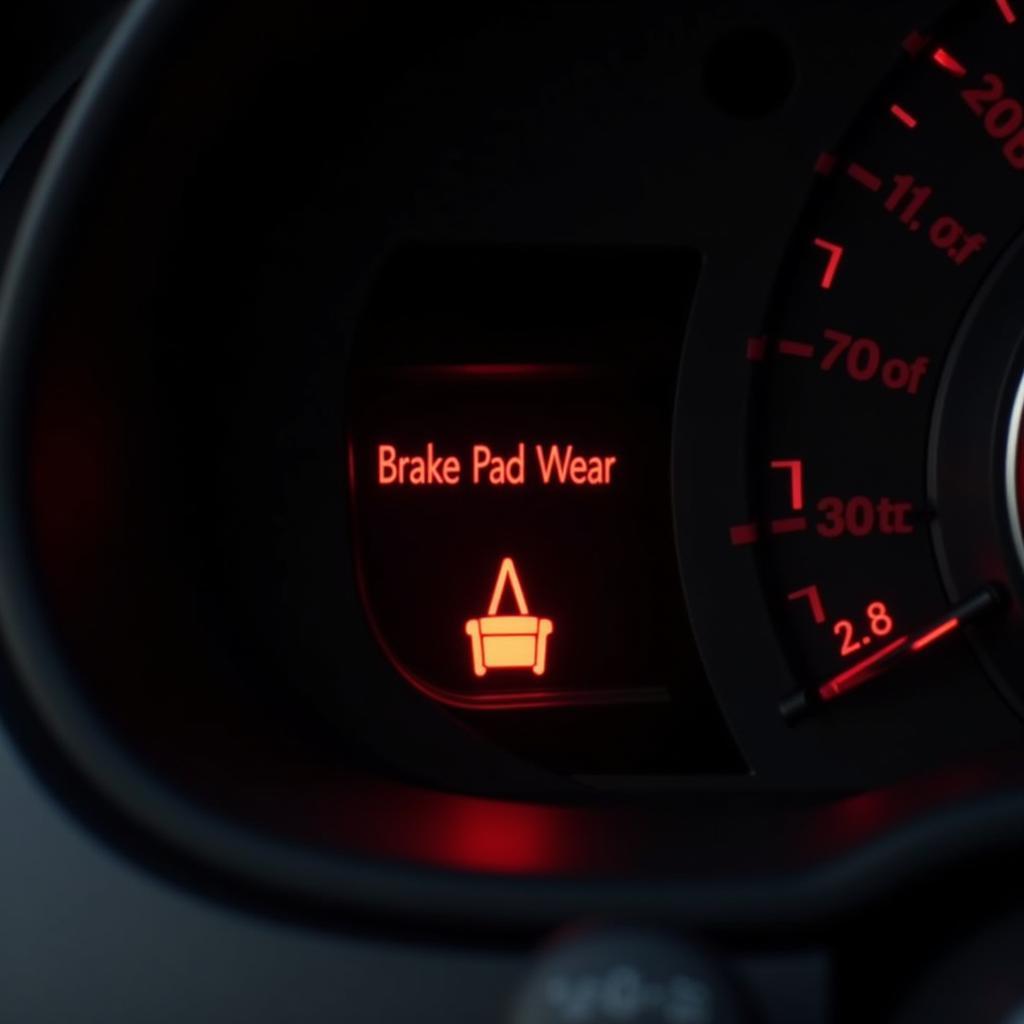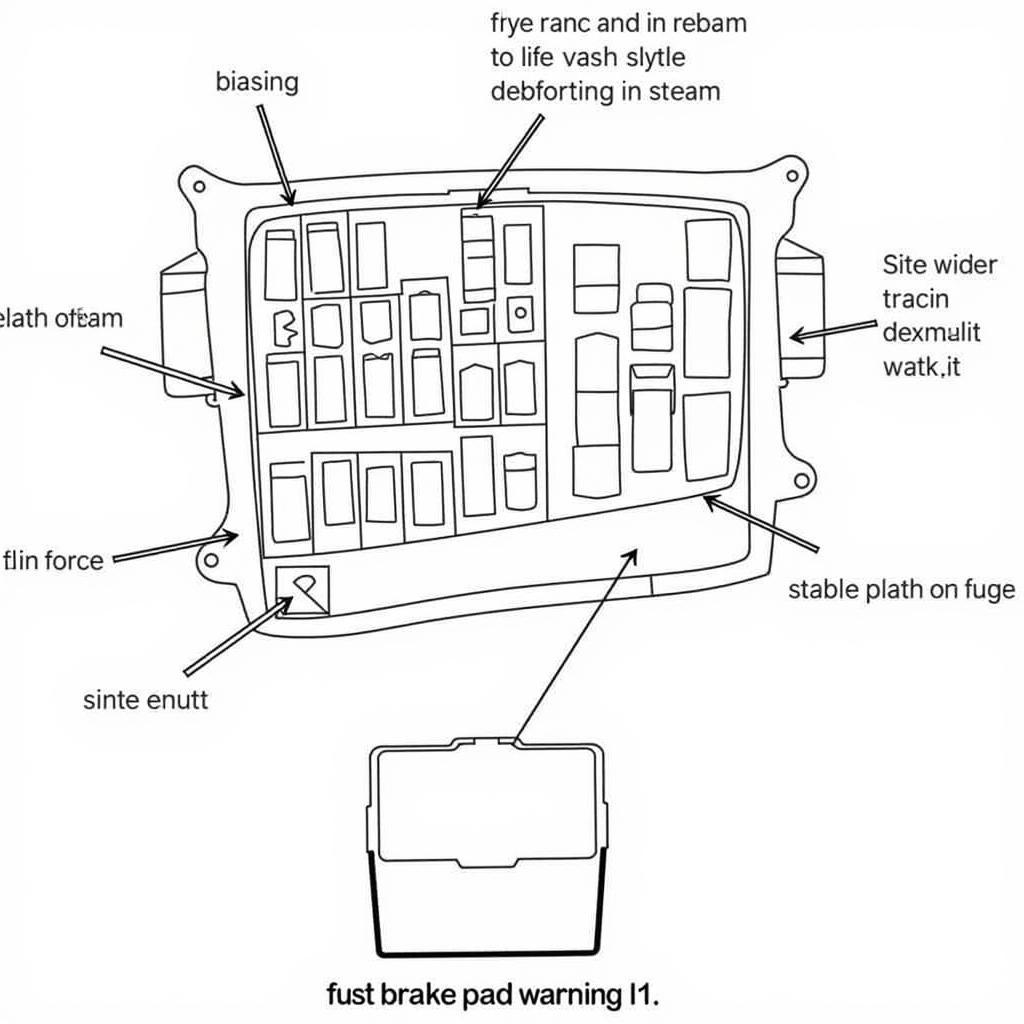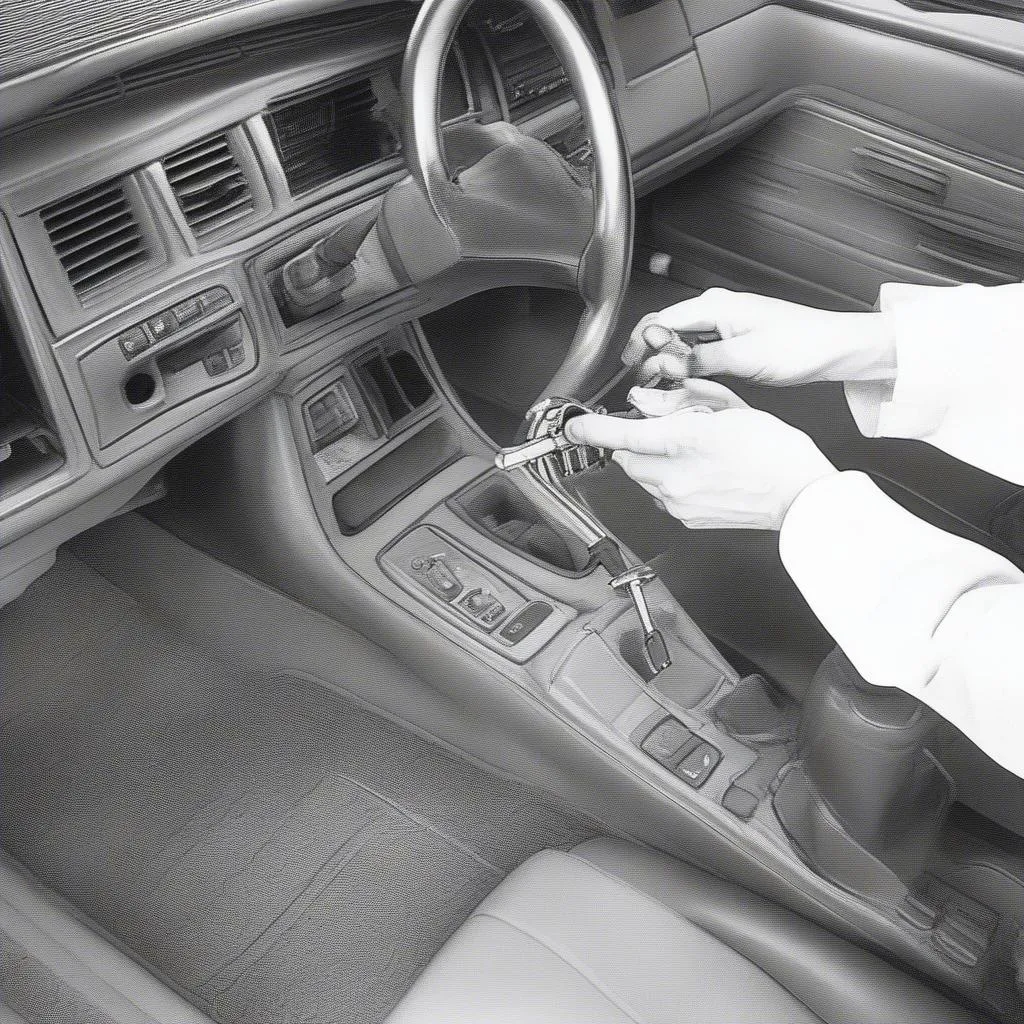You’re cruising down the road in your sleek Audi S5, enjoying the purr of the engine and the wind in your hair, when suddenly, a warning light flashes on your dashboard. “Brake Pad Wear” it screams, accompanied by a symphony of beeps and flashing lights. Is it a faulty sensor? Worn-out brake pads? Or could it be something more elusive – a circuit break issue? Let’s delve into the world of Audi S5 brake pad warnings and explore the potential culprit: circuit breaks.
Understanding Your Audi S5 Brake Pad Warning System
The brake pad warning system in your Audi S5 is your vigilant guardian, designed to alert you about potential braking issues before they escalate. The system comprises various components working in harmony:
- Brake Pad Wear Sensors: These tiny sentinels, usually embedded within the brake pads themselves, monitor the pad’s thickness.
- Electrical Circuitry: This intricate network of wires and connectors acts as the nervous system, transmitting signals from the sensors to the car’s computer system.
- Dashboard Warning Light: This is the final messenger, illuminating to grab your attention and convey the potential issue.
 Audi S5 Dashboard Showing Brake Pad Warning Light
Audi S5 Dashboard Showing Brake Pad Warning Light
Why Circuit Breaks Matter
Circuit breaks are the unsung heroes of your Audi S5’s electrical system. They act as safety valves, designed to interrupt the flow of electricity if there’s a surge or overload that could damage sensitive electronic components. While their primary function is protection, a malfunctioning circuit break can lead to a cascade of issues, including a false brake pad warning.
Could a Circuit Break be Triggering Your Brake Pad Warning?
The short answer? Yes, it’s possible. Here’s why:
- Power Interruption: If the circuit break responsible for powering your brake pad wear sensors malfunctions, it can disrupt the flow of information, causing the system to misinterpret the signals and trigger a false warning.
- Voltage Fluctuations: Circuit breaks can sometimes be overly sensitive, tripping even with minor voltage fluctuations. This interruption, though brief, can be enough to disrupt the brake pad sensor readings.
Troubleshooting Your Brake Pad Warning: A Step-by-Step Guide
Before you jump to any conclusions, let’s walk through a systematic approach to troubleshoot the issue:
- Inspect Your Brake Pads: The most obvious culprit is often the simplest one. Physically inspect your brake pads for wear and tear. If they appear thin or worn down, they likely need replacement.
 Worn Brake Pads on an Audi S5
Worn Brake Pads on an Audi S5
-
Check for Visible Damage: Carefully examine the wiring and connectors leading to your brake pad wear sensors. Look for any signs of fraying, corrosion, or loose connections, as these can disrupt the electrical signal.
-
Consult Your Owner’s Manual: Your Audi S5’s owner’s manual is your best friend. Locate the fuse box diagram and identify the specific fuse associated with the brake pad warning system.
-
Inspect the Fuse: Using a fuse puller (usually found in your vehicle’s toolkit), carefully remove the fuse and inspect it for any signs of a blown fuse, such as a broken wire or a dark, discolored section.
 Audi S5 Fuse Box Diagram
Audi S5 Fuse Box Diagram
- Test the Circuit Break: If the fuse appears intact, the next step is to test the relevant circuit break. This requires a multimeter and a basic understanding of electrical circuits. If you’re not comfortable working with electrical components, it’s best to consult a qualified mechanic.
“Always prioritize safety when working with your vehicle’s electrical system. Disconnect the negative battery terminal before handling any fuses or circuit breakers to prevent electrical shocks or short circuits.” – Mark Stevenson, Lead Automotive Electrician, German Auto Specialists
When to Call in the Professionals
While troubleshooting basic issues can be a rewarding experience, some situations call for the expertise of qualified professionals. If you’ve gone through the troubleshooting steps and still haven’t pinpointed the cause of the brake pad warning, it’s time to schedule an appointment with your trusted mechanic or Audi dealership.
Conclusion
A persistent brake pad warning light in your Audi S5 should never be ignored. While worn brake pads are a common culprit, it’s crucial to consider other possibilities, including circuit break malfunctions. By adopting a systematic approach to troubleshooting and understanding the potential causes, you can ensure the optimal performance and safety of your Audi S5’s braking system. Remember, a well-maintained car is a safe car.

